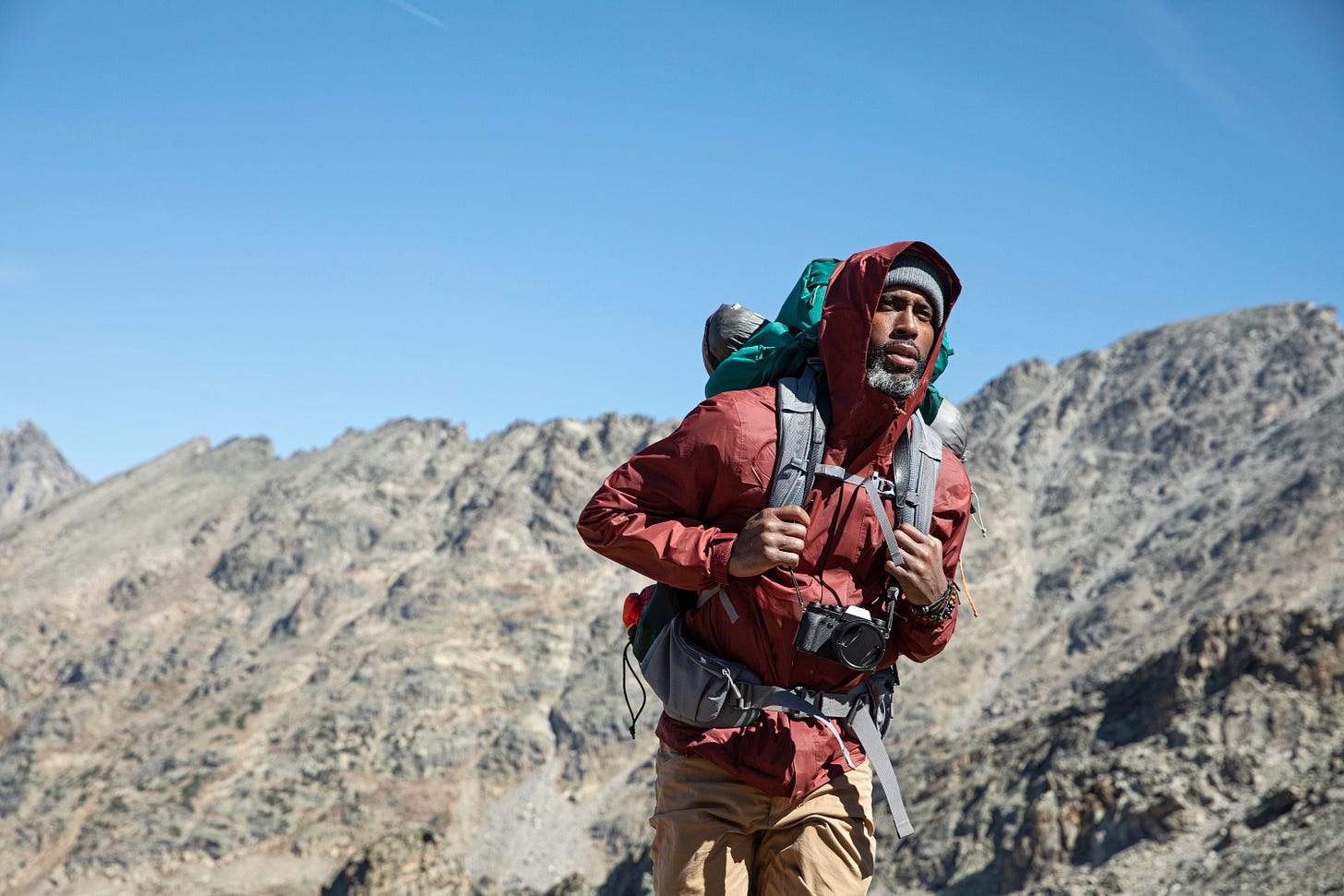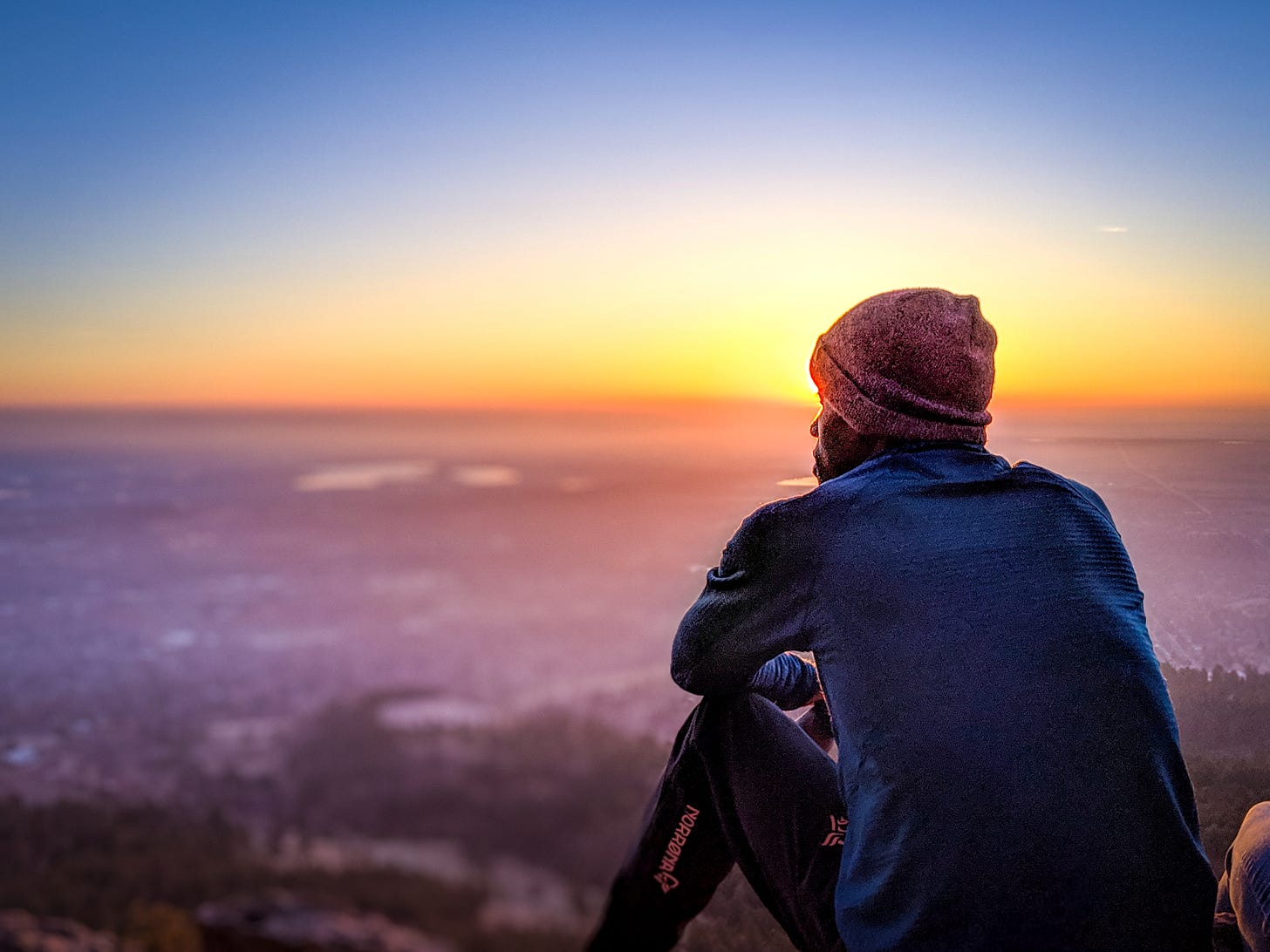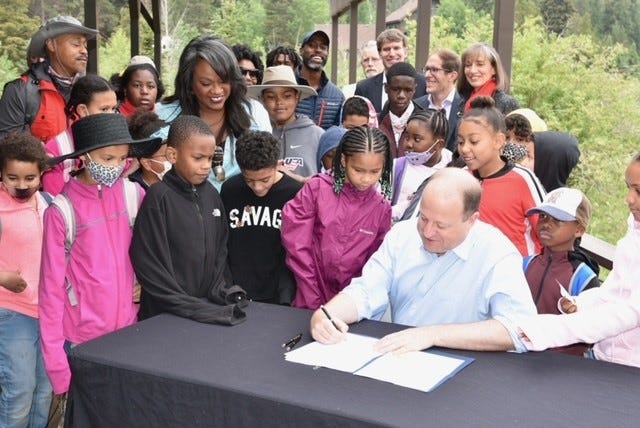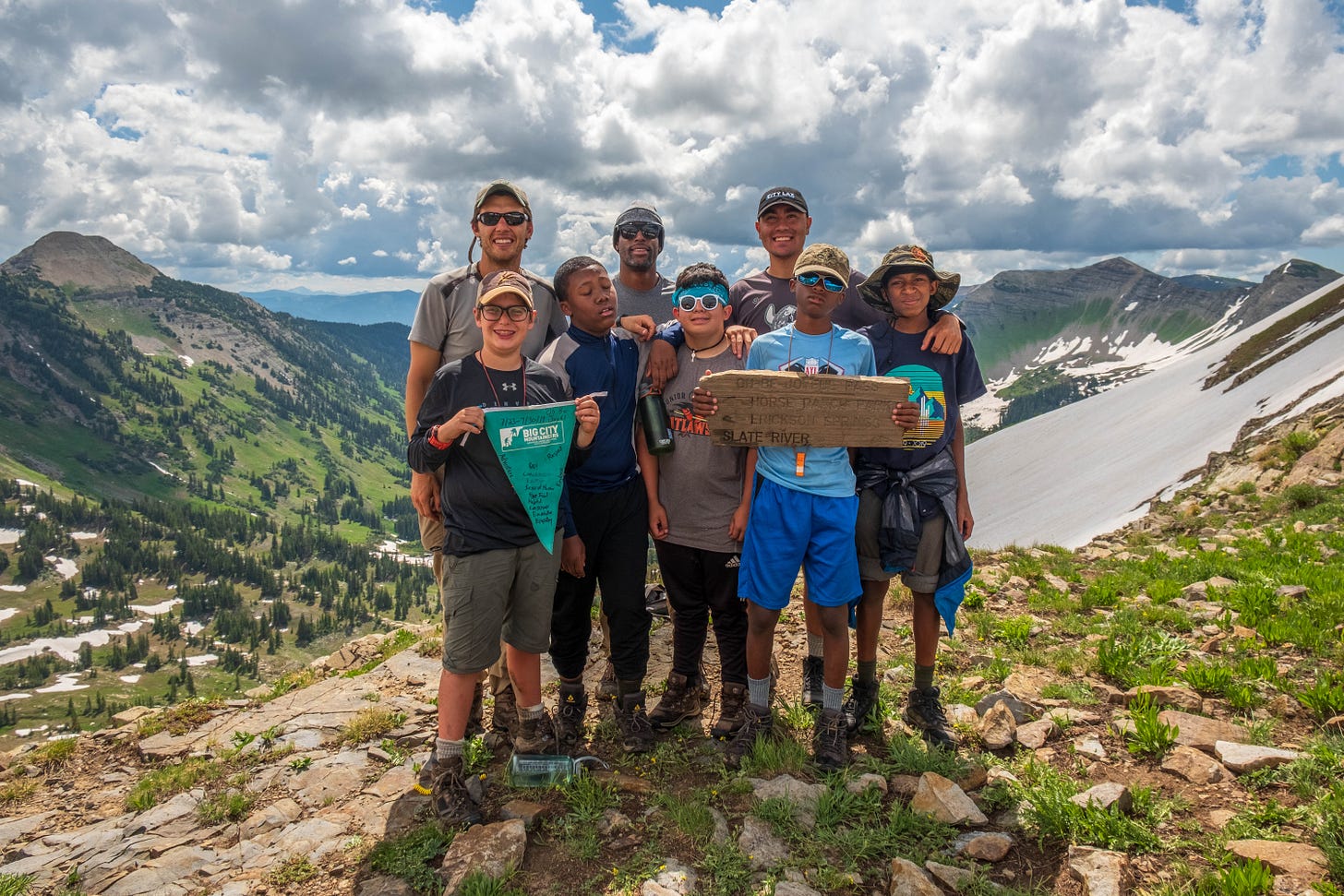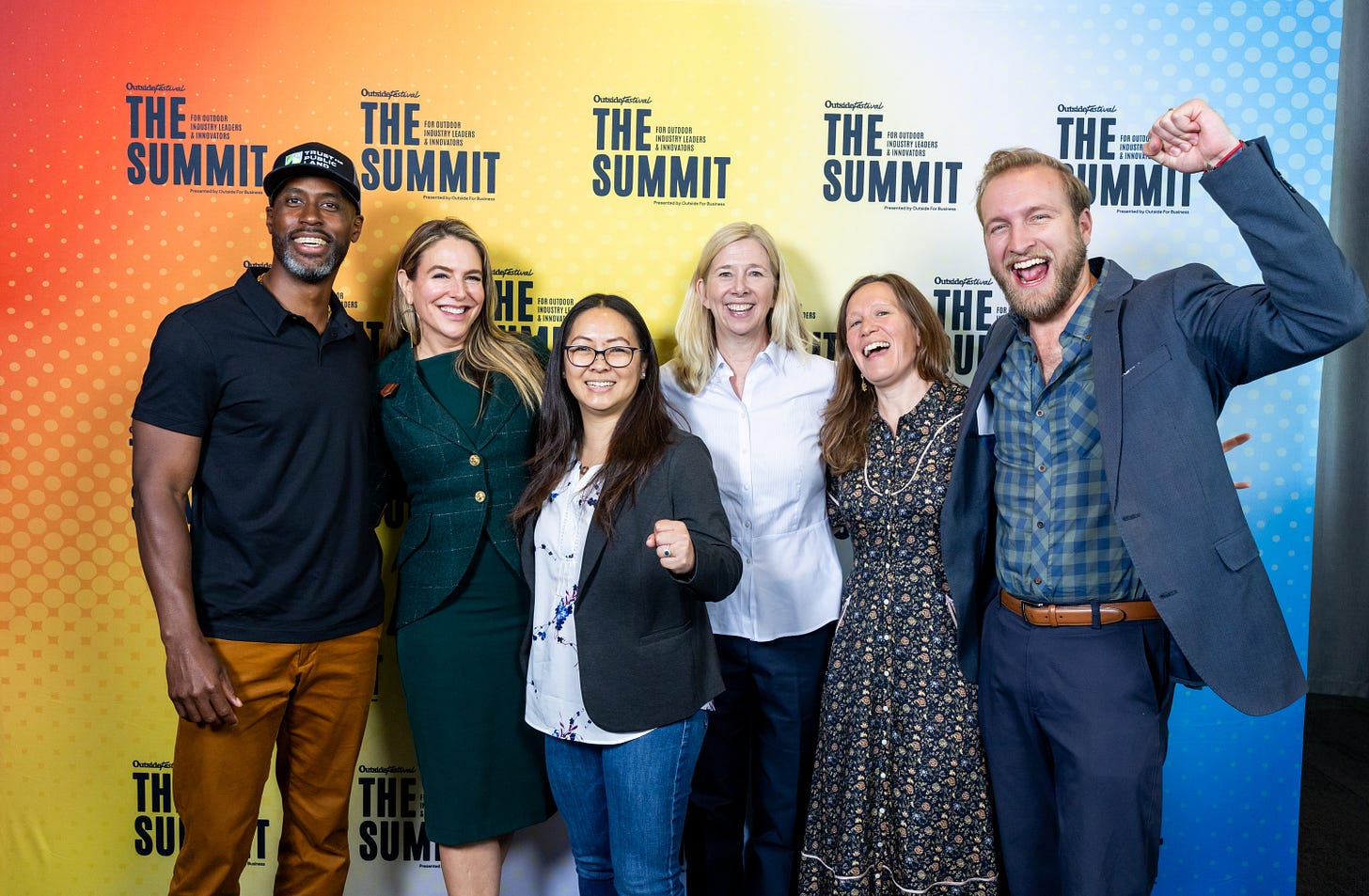Paths Crossed: Jason Swann
The conservationist and co-founder of Rising Routes on “shaping a future where belonging is woven into every trail, summit and shoreline.”
Jason Swann and I are connected through one of my best friends of twenty years. But as it turns out, our mutual admiration stretches even farther, into America’s public lands and the outdoor spaces where we go to recreate and recharge. As the Intermountain West Conservation Finance Director at Trust for Public Land, the Colorado resident is on the front line in the fight to protect and preserve our wild places.
But for far too long, these places have been less than welcoming or accessible to those who are not white and able-bodied. Access to nature is a matter of equity and justice, and Jason was instrumental in passing Colorado’s Outdoor Equity Grant Program, the first of its kind in the state. As we discuss, when you follow the money and learn about the history of inequities as related to the lack of parks, trails, and open, public, green spaces in low-income and rural communities, the intent to exclude has been very much by design. The grant—and others like it—invests in organizations that bring youth and families from underserved and underrepresented communities into the outdoors.
Importantly, it is the long-game that Jason is playing when it comes to making sure everyone has a place to play outside. He is using Rising Routes, the nonprofit that he co-founded, to transform the outdoor access ecosystem through slow, intentional systems change. What if nature's benefits were shared by everyone, everywhere? That is the question he leads with, before ensuring that state, local, and regional legislation is informed by thoughtful research and data collected through surveying the community directly and learning about their needs and constraints. As Jason says, “Real, durable change moves at the speed of trust.”
Here, we get into all of it—the work of conservation finance and environmental justice, identifying and solving for systemic barriers to the outdoors, hiking and wildflowers, and sustainable investments that translate into lasting access for communities that have historically been left out. I also learn about the event that changed Jason’s life path, the one he walks with such grace. It is in the outdoors that we find the nature of who we are, and Colorado is lucky to have Jason fighting for its people and public spaces.
How would you introduce yourself?
I’m a conservationist, outdoor enthusiast, and lover of all things nature. For the past six years, I’ve dedicated my life to protecting the public lands and outdoor spaces people love to recreate in—ensuring healthier, more resilient communities for generations to come.
My path into conservation hasn’t been linear. Before this work, I spent a decade in finance, then transitioned into land and policy analysis with Western Resource Advocates. Today, I serve as the Intermountain West Conservation Finance Director at Trust for Public Land, where I focus on securing long-term, sustainable public funding for parks, open space, and climate resilience.
We talk so much about protecting our public lands. But what does that mean in your day-to-day work? Can you root this a bit?
For me, it’s not just about protecting lands. It’s about ensuring that everyone—regardless of race, income, or geography—can connect with the outdoors so they can take part in all of nature’s benefits in their everyday lives. That might mean creating new public funding for community schoolyards, parks, trails, and open spaces, or injecting money into outdoor education and recreation nonprofits and small businesses who serve underrepresented and under-resourced children and families. Through Rising Routes, my nonprofit, we’re strengthening the outdoor access ecosystem by supporting the people and organizations driving it forward; we’re reshaping the systems that have historically excluded so many. Through my work at Trust for Public Land, I help communities secure long-term public funding and policies that protect these spaces, expand access, and ensure they’re truly shared and equitably supported by the people who need them most.
How did you become an outdoors guy? What got you hooked?
I fell into it by mistake; it wasn't something that I was looking for. I think it found me, and it found me through trauma. Oftentimes you hear people tell a very disheartening story about what brought them to discover something. And for me, it resulted from a terrible incident. I was wrongfully identified by cops, beat up by them, thrown in jail, and accused of a crime I didn't commit. After always being a standup citizen, something like that happening woke me up to the disparities of the judicial system. It woke me up to racial injustice, and it also woke me up to the fact that people don't know each other—we form our own assumptions, biases, and opinions about who we think somebody is based off of race, gender ethnicity, ability, or whatever it is. We don't give ourselves a chance to really get to know each other on a personal level. And so when that happened to me, I moved away from the state that I was in to Colorado. It was the worst-best thing that ever happened to me, allowing me an opportunity to experience the peace and equanimity of Colorado's outdoors. It saved me from the rage I was feeling inside and opened me up to a new door of possibilities, and sparked the question I mentioned before: What if everyone, everywhere shared in the benefits of the outdoors?
Was there a hike in Colorado that made you fall in love?
There was a particular hike that made me fall in love. It’s Arapaho Pass at Lake Dorothy, and it's in Nederland, Colorado, up the Fourth of July trailhead. It's one of the most beautiful hikes, especially if you do it for sunrise. People know me—I get up early in the morning. Sunrise is the best part of the day, and I don't want to be around a big crowd on the trail. Plus, I want to be home at a decent time. The wildflowers, pristine alpine lakes, waterfalls, and the surrounding mountain peaks make this hike one of the best in the Front Range.
Was it quite direct then for you, hiking as a source of healing after this police incident? Were you angry? Because my god, where do you even put all that? Or how do you find a way to let go of those emotions, if you’re open to sharing what came up for you.
I definitely carried a lot of built-up anger, especially because, at the time, I was thriving in finance, steadily climbing the corporate ladder. Then everything changed. I spent over a year fighting the judicial system, and even after all that, the charges weren’t dropped, they were just reduced. It left me jaded, like someone was actively trying to derail my life.
I had envisioned a clear path of becoming a certified financial planner, building wealth for clients, and making a name for myself in the industry. But that one incident left me with a misdemeanor, and just like that, the doors in finance started closing. It was hard to even get a callback.
So yeah, I was angry, angry at the system, angry at the world. But stepping into the outdoors became a turning point. It gave me space to reflect, to heal, and to reimagine what my life could be. Everything that happened broke me down—but it also rebuilt me into who I am now.
I was just starting to think on that take, where we all end up as the result of all things…
It propelled me into this career to start advocating. And the thing is, once you go through something like that, and you start utilizing the outdoors as refuge—as a medium for healing—and it actually does that for you, then you got a testimony, and you have a lived experience with it. And then you start realizing, man, how many people don't know about this—and they need to know this exists, so that they can receive the same type of healing.
So true. I’m grateful for your resilience as well, that’s the component that feels like a blessing. I mean of course it’s a process and takes time to move through such a thing. But there’s this anecdote that sticks with me, where someone was talking about the resilience factor—that one person could walk away from a plane crash and shake it off and just decide it’s something that happened, whereas just as easily that trauma could crush someone else, who feels more deeply that it happened to them.
I think about that all the time—how I could’ve gone one of two ways. Some people take the worst things that happen to them and turn it into harm, to themselves or to others. But I chose to let it shape me differently. At the end of the day, we are our experiences. And while I’d never wish what happened to me on anyone, I can now relate in a deeper way to people who’ve gone through similar things.
Before it happened, I was that guy who thought, “That would never happen to me. Those people must’ve done something wrong.” But it woke me up. The truth is, people do get targeted just for existing. Racism is real. Hatred is real. And no, it doesn't always come with a warning.
So yes, I’m thankful—for the clarity, for the growth, for the path I’ve found. It wasn’t a straight line. It was messy, painful, and hard. But it led me to the work I do now, and I carry that with a kind of purpose I never had before.
So let’s talk about the work. You co-founded a nonprofit called Rising Routes. And you’re also doing conservation finance at Trust for Public Land. And as I understand it, you were involved in getting Colorado’s Outdoor Equity Grant Program passed. So many things I’m interesting in learning more about, but start wherever it makes sense to start.
It’s interesting—when I first started looking at the outdoor recreation industry, I came in as an observer. As I began working with and researching outdoor education and recreation providers who are small businesses, nonprofits, and even local government agencies, I realized something important: I didn’t want to be a direct service provider.
What I saw was a field full of passionate people doing critical work, but operating in isolation and under constant financial strain. That’s when it became clear to me that my role was to support them, not by duplicating their work, but by focusing on systems-level changes. I wanted to work upstream to reshape the structures, policies, and funding mechanisms that define how this ecosystem functions.
To do that, we need more than passion. We need formal, long-term coalitions and organizations that are coordinated, resourced, and strategic. That’s how we become a force to be reckoned with—at the statehouse, at city hall, and in every room where decisions about outdoor equity are being made.
And just to be clear, when you say providers, they do what?
They are the organizations or individuals who are providing a service to get children or families into the outdoors, or educate people about the outdoors in some shape or form. The market is saturated, and Colorado is full of nonprofits, but there are so many organizations and businesses who don’t take the time to do the market research to understand the audience they want to support. I wanted to understand the challenges, constraints, and bottlenecks that are preventing these providers from working sustainably in their communities. So I put myself in the position to learn from other experienced experts in this industry. I started by joining Outdoor Afro for a year, one of the top providers in outdoor recreation.
My years’ old orange hiking pants from Outdoor Afro are still my favorite, when they did a collab with REI.
They are great. After learning about some of the inner workings there, I worked for a policy organization, Western Resource Advocates, going inside that system to advocate for our public lands. And then I began to understand how nonprofits operate, what their revenue options are—donations, sponsorships, membership fees, things like that. And now that I’m working within a big conglomerate like Trust for Public Land, embedded in conservation finance, it’s been helpful to understanding how taxes work. How your parks, your trails, your open spaces, your community schoolyards, and recreational facilities are funded.
Define conservation finance for me.
Conservation finance is about creating and protecting public funding for parks, open spaces, climate resilience, conservation, and environmental justice. In my work, I collaborate with elected officials, community leaders, and organizations to design and pass ballot measures and legislation to support that work. When you start following the money, you begin to see who benefits and who’s been left out. It becomes clear that the lack of investments in parks, trails, and green spaces are in communities of color, low-income areas, and rural places, and that this is not accidental. It’s the result of deeply rooted, intentional inequities. Conservation finance is a tool to begin correcting that.
Tell me about this Outdoor Equity Grant Program you helped get passed in the Colorado legislation.
We created Colorado’s Outdoor Equity Grant Program in 2021 and passed it with the support of Governor Polis. The idea came out of the clear disparities we saw during 2020—communities of color, low-income families, and rural residents were disproportionately disconnected from outdoor spaces. In response, we worked with over 60 racially and ethnically diverse organizations to design legislation rooted in their real-world needs. The program provides public funding to small businesses and nonprofits that increase outdoor access for historically underserved communities—especially youth. While states like New Mexico and California had similar models, what made our approach different is that we didn’t just focus on policy design—we also paid close attention to the human and relational work. A lot of smart policy people can craft legislation, but without trust, cultural fluency, and community-rooted strategy, it won’t hold. That’s where we led differently.
What are the critical barriers to access within these community? I think keywords around the issues tend to be thrown around, but as you point out, intentioned, sustainable change is rooted in really understanding what they mean.
With my nonprofit, Rising Routes, we surveyed 81 outdoor recreation providers across Colorado and identified four key systemic barriers that continue to limit equitable access to the outdoors. These aren’t new problems, they're well-known. But the response to them has been fragmented at best, with solutions often siloed, short-term, or confined to organizations working in close proximity to one another.
The first barrier is unstable funding. Many providers rely on inconsistent grants and don’t have reliable revenue streams. Some aren’t even aware of the funding opportunities available to them, which keeps them in a cycle of financial precarity.
The second is physical access. Transportation remains a major challenge, especially for low-income and rural communities. On top of that, gear shortages continue to exclude people, not because of a lack of interest, but because they simply don’t have the resources.
Third is a workforce development gap. Leadership training and professional development emerged as high priorities, especially for organizations serving diverse communities. But due to limited funding and high staff turnover, most nonprofits struggle to invest in building and retaining talent.
Fourth is fragmented collaboration. Many of these organizations share the same mission, serve similar populations, and compete for the same pool of funding. Yet partnerships are often informal and lack the infrastructure needed to sustain or scale coordination. As a result, opportunities for strategic alignment, shared learning, and collective impact are routinely missed.
Can you give me an example of fragmented collaboration?
Sure. On Colorado’s Western Slope, you might have an organization in Mesa County that takes disabled youth out on adaptive hiking trails in Grand Junction. Just a few miles away, in a neighboring county, there's another group with a similar mission, also focused on outdoor access for youth with disabilities. But these organizations often don’t know each other exists, let alone share resources. One might have adaptive gear but limited transportation; the other might have access to wheelchair-friendly trails but lack outreach tools or funding. Because there’s no shared infrastructure or centralized system for coordination, they operate in silos—duplicating efforts and missing opportunities to collectively scale their impact across the region. This is what we mean by fragmented collaboration: organizations with aligned missions and overlapping service areas, disconnected simply because the ecosystem lacks the connective tissue to bring them together.
So where does Rising Routes come in? Can you contextualize your nonprofit’s vision next to what you’re doing for the Trust for Public Land?
Absolutely. My work at Trust for Public Land is about helping communities secure sustainable public funding for parks, conservation, and climate resilience. I collaborate with government agencies and coalitions to develop ballot measures and legislation that facilitate long-term investments in outdoor spaces. But passing policy and raising funds is just one part of the solution.
That’s where Rising Routes comes in. We focus on what happens after the funding is secured—on strengthening the human and organizational infrastructure that makes equity in the outdoors a reality and a sustainable practice. Our mission is to support the providers doing the on-the-ground work, many of whom are underresourced, overburdened, and operating in isolation.
In the example I shared earlier, Rising Routes would step in to identify those two organizations on the Western Slope and help them find one another, build trust, and share resources. We create the connective tissue through shared data, cross-sector convenings, and a backbone structure that makes collaboration easier and more impactful. We don’t duplicate their work, we help them scale it, align it, and sustain it.
Together, my work with TPL and Rising Routes addresses both the funding and the function: securing the dollars and building the systems to ensure those investments translate into real, lasting access for communities that have historically been left out.
What, in your experience, is one facet of a lasting solution that doesn’t just change with each administration? What are people getting wrong about all of this?
There’s a saying I come back to often: Slowly is the fastest way to get to where you wanna be. But too often, people rush to deliver something to communities rather than take the time to build with them. I understand the urgency—policy windows are narrow. You might get the right governor, the right legislature, the right momentum, and feel like you have to act fast. And sometimes, yes, you do. Policy can be about timing and luck.
But what people often get wrong is thinking that passing a bill or securing funding is the finish line. It’s not. If the community wasn’t meaningfully involved from the start, or if systems aren’t built to hold the work when leadership changes, then that progress isn’t built to last. Real, durable change moves at the speed of trust. That takes time, and it’s worth it.
That’s beautifully said. So what do you see specifically falling apart when the community isn’t involved or when the work is rushed?
When funding that's meant for community starts to trickle down, it often gets disrupted, because many grassroots organizations simply aren’t set up to receive it. I see it every day. They don’t have the infrastructure, administrative capacity, or the program alignment needed to access the dollars. So, the money ends up going to whoever is already prepared, and too often, that doesn’t include the communities most in need.
To me, the starting point is simple: someone has to be in the room. That’s where policy decisions about climate resilience, outdoor access, and equity are made—in small rooms, often without representation from the communities most impacted. I know because I’m in those rooms, and more often than not, I’m the only Black person there.
Meanwhile, the providers we work with are overwhelmed, focused on delivering programs, managing shoestring budgets, and surviving. They don’t have the luxury of tracking obscure policy updates or funding announcements. So, part of my role is to listen: through surveys, focus groups, and real conversations. I bring their insights back into those rooms to make sure the policies and funding structures are designed in ways that actually serve them. Because otherwise, the cycle of exclusion just repeats, regardless of how well-intentioned the money might be.
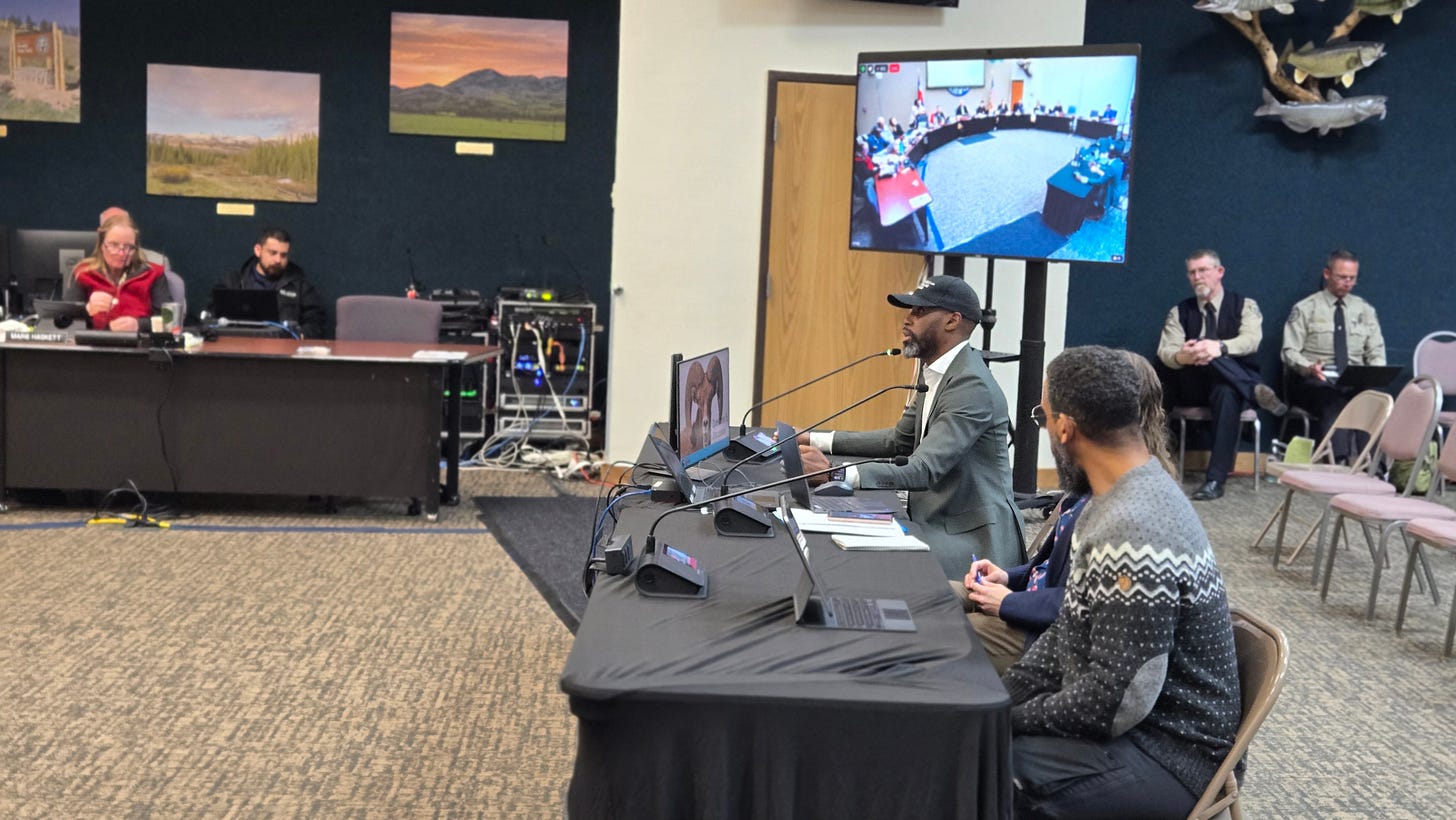
By the way, can you mention some of these providers by name?
I can mention Vibe Tribe Adventures, Full Circle Expeditions, BlackPackers, Camping to Connect, and Beast Fingers Climbing. All are Black-led organizations.
Thanks for that. Also, I imagine you are quite the role model in some of these spaces when it comes to a younger generation discovering new pathways and job opportunities.
Yeah, I hear that—and I appreciate it. I do think representation matters, especially for young people who don’t often see themselves reflected in these spaces. But honestly, I’ve never thought of myself as a role model. My focus has always been on fixing systems that aren’t working—things we’ve known about for a long time, but where progress has been slow or fragmented.
I’m trying to look across the board at state, regional, and local levels, and ask: where are the gaps, where’s the coordination breaking down, and how do we build something that actually works for underserved communities? That’s the goal. If visibility or inspiration comes from that, great, but I don’t lead with it. When we start centering ourselves instead of the work, ego gets in the way. And in this field, that happens more than people like to admit. I just want to stay focused on real change.
When you’re in these small rooms, or out on the trail, are you dealing with microaggressions and implicit bias? And do you use a particular tool in these situations?
Absolutely. I’ve dealt with that on the trail, in meetings, in all kinds of spaces. And sure, it bothers me. I’m human. But I’ve learned not to let other people’s ignorance or bias take up space in my life. I don’t carry their words or energy with me. I stay rooted in who I am, what I know, and the purpose I’m here to fulfill. It’s less a “tool” and more a deep vote of confidence in myself.
That confidence didn’t just appear, it was forged through real loss. I’ve lost my freedom. I’ve lost my job. I’ve lost relationships. I’ve had moments where my dignity felt stripped away. And through all of that, I learned that life is unpredictable. You can’t always control what happens to you, but you can decide how you move through it. That’s what grounds me. So whether someone comes at me with a microaggression or straight-up racism, I’m not going to let it stop me. I’ve got one life to live, and I’m going to live it fully, on my terms.
What are you most proud of right now?
I think I'm proud of just staying the course, not giving up. It‘s so easy to give up. It's so hard to keep going. So I'm proud of that.


